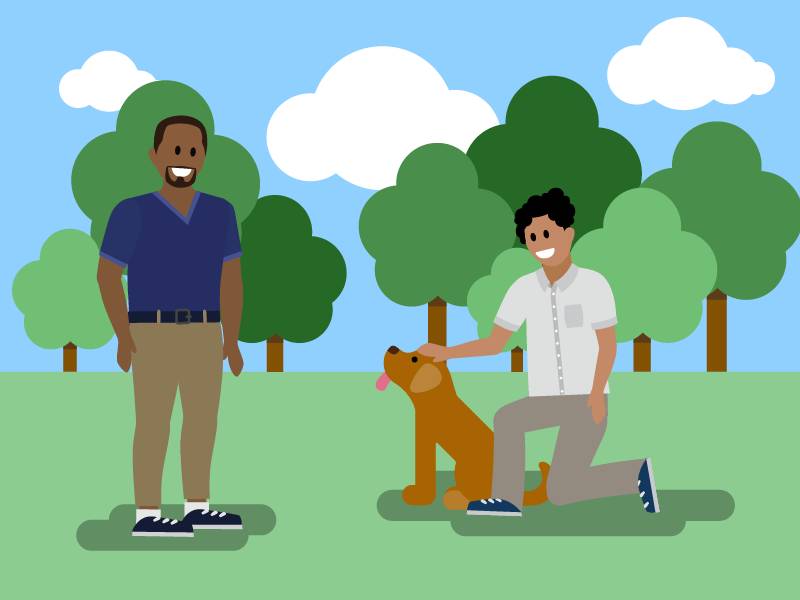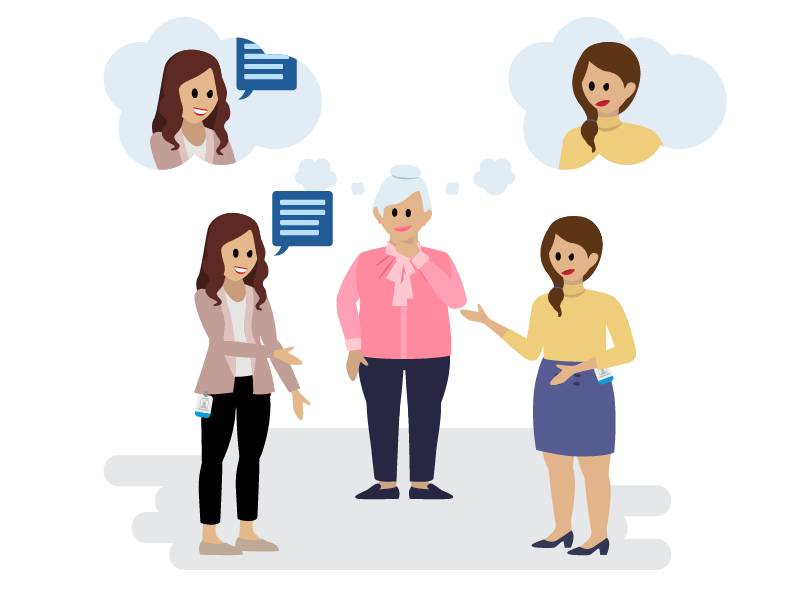Respond to People with Empathy
Learning Objectives
After completing this unit, you’ll be able to:
- Define empathy.
- Explain the difference between sympathy and empathy.
- Evaluate your level of empathy.
Be a Leader Wherever You Are in Your Career
Leadership is about inspiring others, building trust, and working well with teammates. While we expect managers and those higher up in the organization to be excellent leaders, individual contributors and those just starting out in their career can demonstrate leadership as well.
This module focuses on the final two elements of emotional intelligence (EI)—empathy and skilled relationships—and how you can apply them as a leader in your organization.
Be Empathetic
As described in the Emotional Intelligence module, empathy is the ability to recognize and understand others’ emotions, and take active interest in their concerns. It turns out that we evolved as a human species to practice empathy.
One part of our anatomy that helps us be empathetic is mirror neurons. These neurons fire when we perform an action—and also when we see someone else doing the same action.

For example, if you see someone happily playing with a pet, you’re likely to react physically and emotionally to what you’re observing. If you see someone who is injured or crying, you're likely to feel something that connects you to what that person is feeling. This response is our mirror neurons at work.
Evolve with Empathy
Because of our mirror neurons and how advanced we are as a society, it can be easy to think that we’re automatically empathetic to others, that we can collaborate with the most diverse set of people with no trouble. But to be empathetic is still a challenge, especially today.
The rise of the internet and social media sites has made it easier to connect with other people in some ways, but it’s also made connection harder. It’s difficult to have a meaningful conversation when you’re limited to a certain number of characters. It’s difficult to feel what someone else is feeling when you don’t see them, because you’re interacting with a screen instead.
All of these things run counter to being empathetic. But it’s too early to tell whether the rise of these sites and apps, which are said to connect us better, will do just that. The writer Jeremy Rifkin suggests that when you look at overall trends in the world, however, the rise of different types of government and technology has expanded our ability to be empathetic with more and more people.
Back in our forager-hunter days, Rifkin points out, our empathy was limited to our immediate family or tribe. In medieval times, people could empathize with an entire class of people within a village or region. After the Fourth Industrial Revolution, we now have access to people and experiences beyond nation-states through the internet.
We have access to more people and experiences than any other time in history. This means we also have a greater opportunity to evolve in empathy. We need to meet the challenges head on and have a clear focus on practicing empathy as we progress as a society. This is one of the reasons why we’ve created this badge!
Differentiate Between Sympathy and Empathy
A common challenge to building EI skills today is ensuring our responses are actually based in empathy, instead of sympathy. Researcher Brené Brown gives a simple way to recognize the difference.
- Sympathy. A sympathetic response can include emotion, but it’s focused on keeping distance, makes a judgement about the person or how they should react, and doesn’t take the other person’s perspective into account.
- Empathy. An empathetic response recognizes the other person’s perspective and emotions, communicates these back to them, and withholds judgement.
It’s the difference between the sympathetic, “I’m sorry you feel that way, but if you just look on the bright side ...” and the empathetic, “You seem upset, and I can see you’re having a rough time.”
It seems counterintuitive, but sympathetic responses often don’t help people feel better. There’s more depth and support felt in the empathetic response. And notice, the empathetic response doesn’t have to offer a solution to the problem. It just needs to recognize the person’s emotions and situation from their point of view.
Reflection: How Empathetic Am I?
The key to developing empathy is how you think about your current ability to empathize. The following questions provide you an opportunity to reflect on your empathy skills. You don’t have to complete the reflection to complete this unit. Your privacy is important, and we won’t save or record your answers. But you may find it helpful to take a moment to pause and recognize where you are in your journey.
To complete the reflection exercise, read each question, then mark your level of agreement or disagreement. Most importantly, take a few moments to reflect on your answers. When you're done, click Print. Choose to save your reflection as a PDF or print out your responses to review them later, if you wish.

Notice how self-awareness and self-management, the elements of emotional intelligence you learned in the Emotional Intelligence badge, help you reflect on your ability to be empathetic. You stop to think about the situation and your own position (self-awareness). You make a judgement about your level of empathy and how you should respond (self-management).
Based on your reflection above, are there areas of empathy where you can improve? Was there a recent situation where you could have stopped, reflected, and intentionally reacted in a more empathetic way? If so, what would be your response today?
